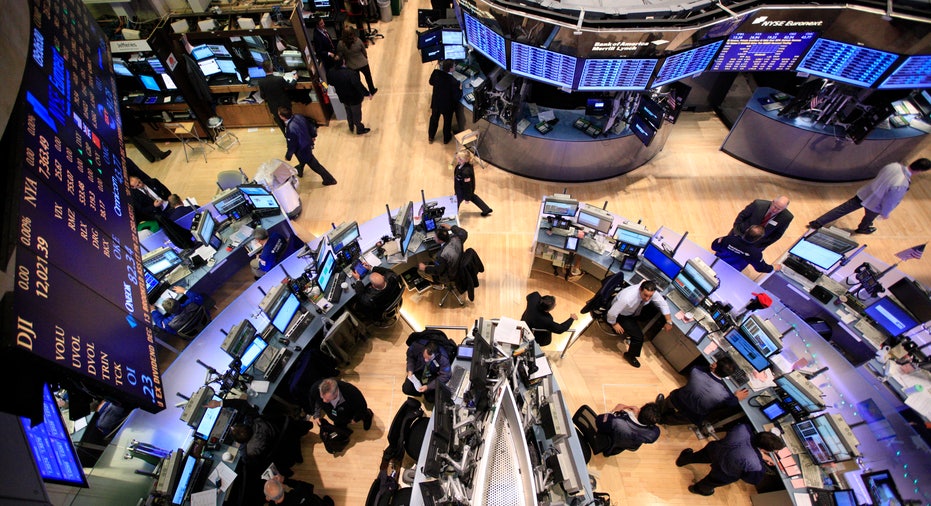Why This Rally Still Has Legs

Market observers are fond of saying things such as "the market feels like it is a little ahead of itself “or “you should sell now because the market is set for a pullback, before proceeding.” “The market is at all-time highs” is another reason suggested for selling. None of these, the myriad of charts or even dismal GDP growth, makes any difference or sense if you take a moment for serious analysis.
Anytime someone says the market “feels” like anything, you can go do something else. Feelings are the downfall of investors. Making money in the stock market is anti-intuitive; it takes the careful analysis of knowledge to make the right decisions. Charts are near meaningless in an environment where governments are unpredictable, sabers are rattled, wars are started, tax laws are changed and politicians declare war on segments of the economy.
If you view the S&P 500 solely in dollar terms, you would say it stands at the 2000 high and within a few percent of matching its all-time high of 2007. If you adjust your dollars for inflation, the market must rise another 35% to match the 2000 high and another 16% to get back where it was in 2007. If you view the S&P in terms of gold, it will have to rise above 3000 or another 100% gain from here.
Although a strengthening economy would supply a tailwind, not even that is needed for this market to continue rising. Even the March sequester (spending cuts) are likely to be a blip in the market, lasting a few days to a couple of weeks. Just about the only scenario that puts this rally in jeopardy is one in which Washington D.C. continues to add new taxes and regulations in their war on small business. Other than that, this rally continues.
Why? Because central banks, the world over, continue to hold interest rates low while they print currency. Here at home, our central bank prints $85 billion per month, over $1 trillion this year. The federal government will spend over $1 trillion more than it takes in. Between the two, we have an extra $2 trillion floating through markets (inefficiently, but still there). That money does a couple of things besides buy elections – it lands in various businesses, hence the economy, almost as if GDP grew. The other result is a currency that is devalued. Just like owning one of the 35 known, T206 Honus Wagner baseball cards, it’s worth is in the millions, but should someone open a vault one day and discover a hundred more, the value would drop dramatically.
Currency is no different, the more that is printed, the less each is worth. If I offer to sell you my gold ring for $100 and you say you will consider it, but wait one year to accept the offer, at a time when the dollar has devalued to 50 cents, I will respond the ring is now valued at 200 of your 50-cent dollars.
For these reasons, as central banks and governments devalue their currency, hard assets, labor and corporations all demand more of the currency than before. Times like these demand investment in equities and hard assets. Cash and debt (CDs, bonds and savings) are the worse investments as their purchasing power erodes.
Taking a look at history, we find as currencies are devalued, equities based in those currencies rise. This was the case in Brazil (1999), Argentina (2002), Russia (1998), Sweden (1992) and Great Britain (1992). Like my gold ring example above, it is common sense this would be the result.
We can especially see this in the United States and Japan right now. The U.S. has been overspending and over-printing for years. The devaluation of the currency is not as apparent when valued against other currencies, which are doing the same. Since the dollar is compared to a basket of currencies comprised mostly of the euro, yen and pound, it may be considered to be strengthening relative to three weakening currencies. Think of it as four men standing in quicksand – all are sinking at different and variable rates. At any moment one might be considered to be relatively taller than the others, but none seem to be sinking until one is below the sand.
Today and for the past couple of months, we can see this is true. Look at Japan. Prime Minister Shinzo Abe ran on the platform that Japan needs to devalue its currency. Succinctly, he stated Japan must print 20% more than the USA. The US is printing $1 trillion, so Japan should print $1.2 trillion in American dollars. As the December 16th election neared and it was apparent Abe would win, the yen began to devalue. As it devalued, the Nikkei market rose. That trend continues today and likely for at least this year.
If you live in Japan, you merely need to invest in the Nikkei market, however if you live here, to get full benefit, you must short the yen and buy the Nikkei. If you invested in the Nikkei and shorted the yen on December 16th, you are up 23% in the past two months. Had you only invested in the Nikkei, that gain is reduced to 7.5% due to the conversion to a relatively stronger dollar from the weakening yen. I expect the yen will begin to level at some point around 95 to 100 yen/dollar, so shorting the yen will become less important while buying the Nikkei, along with the S&P 500, should be profitable as both countries print and overspend.